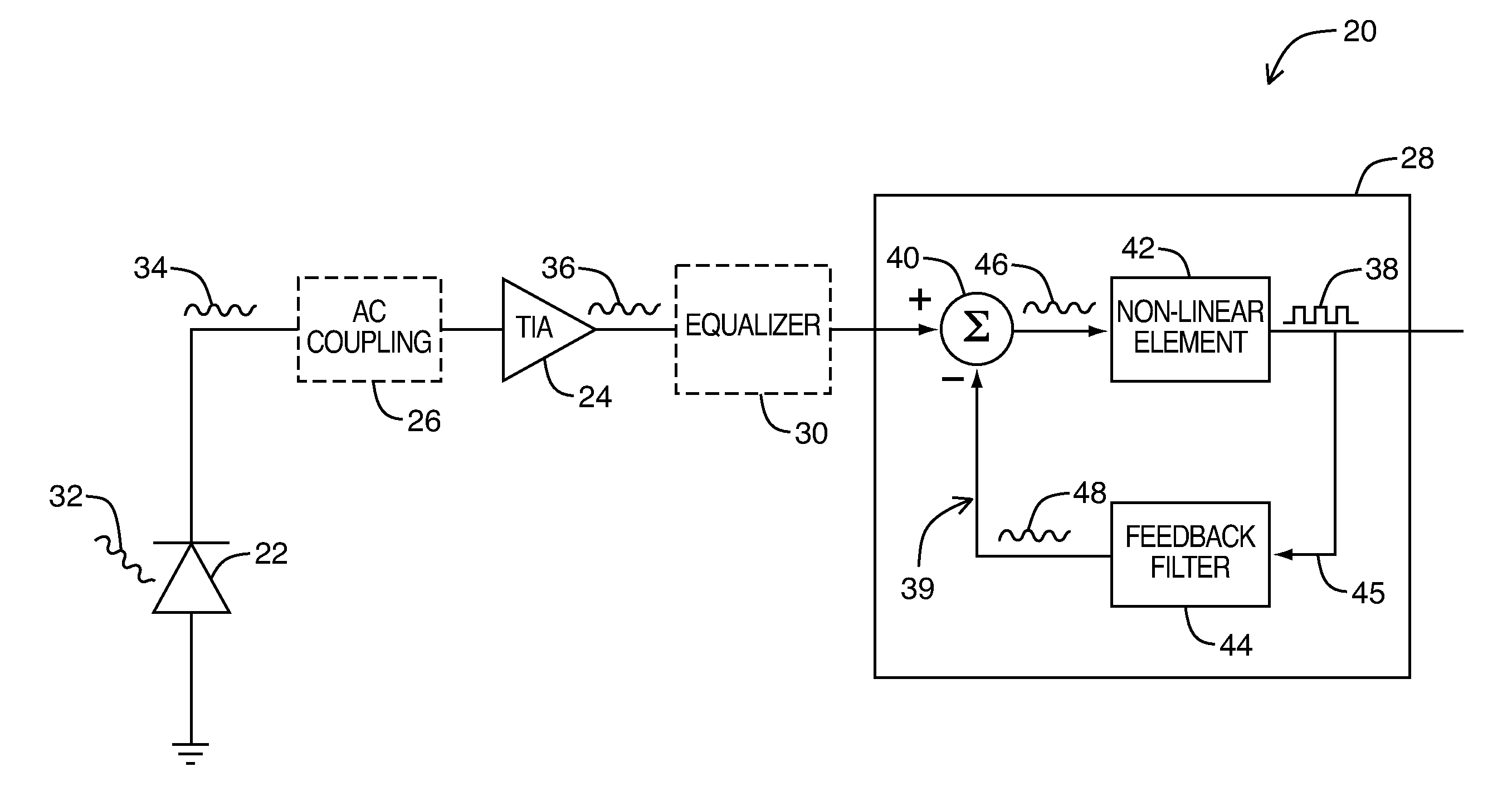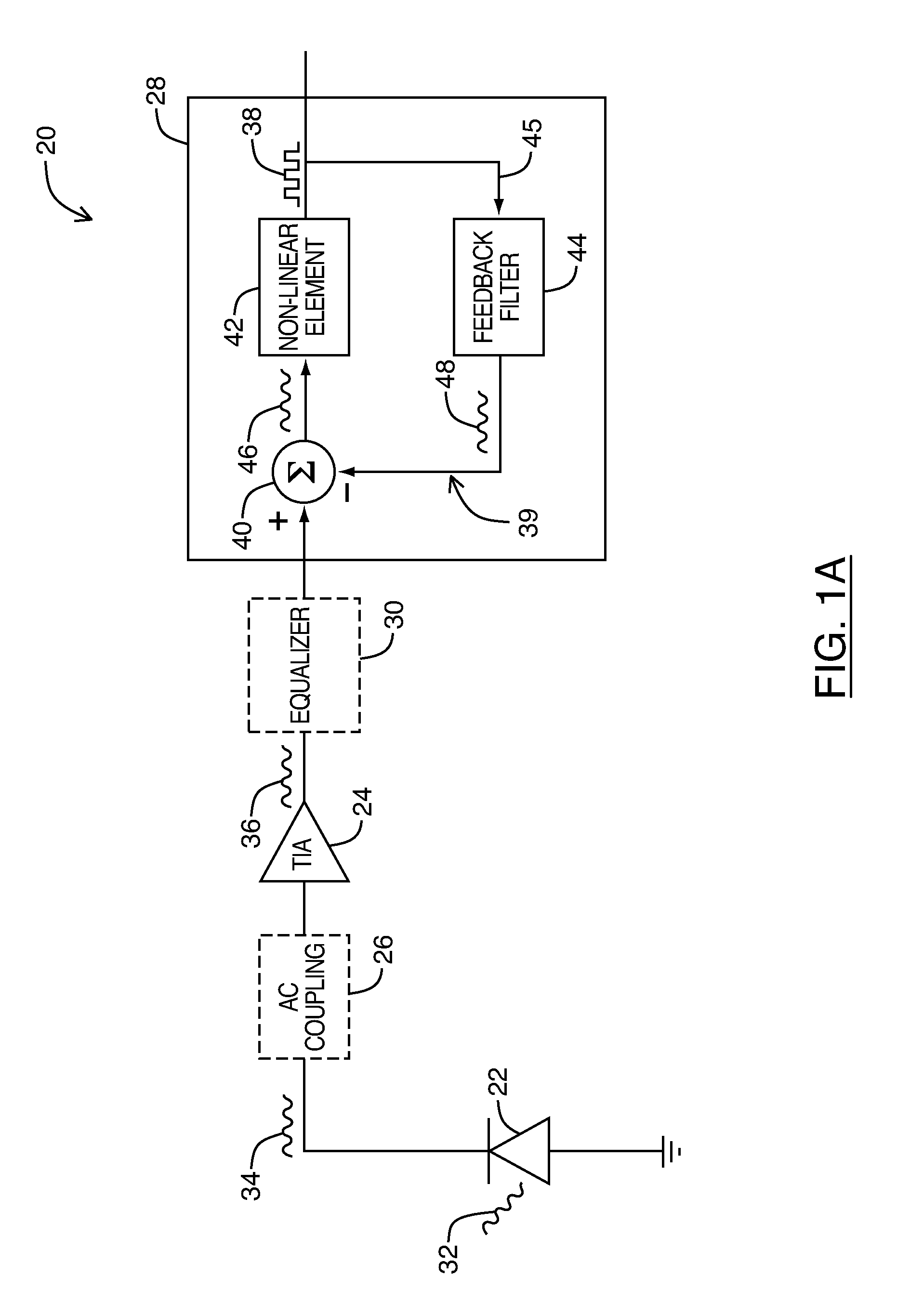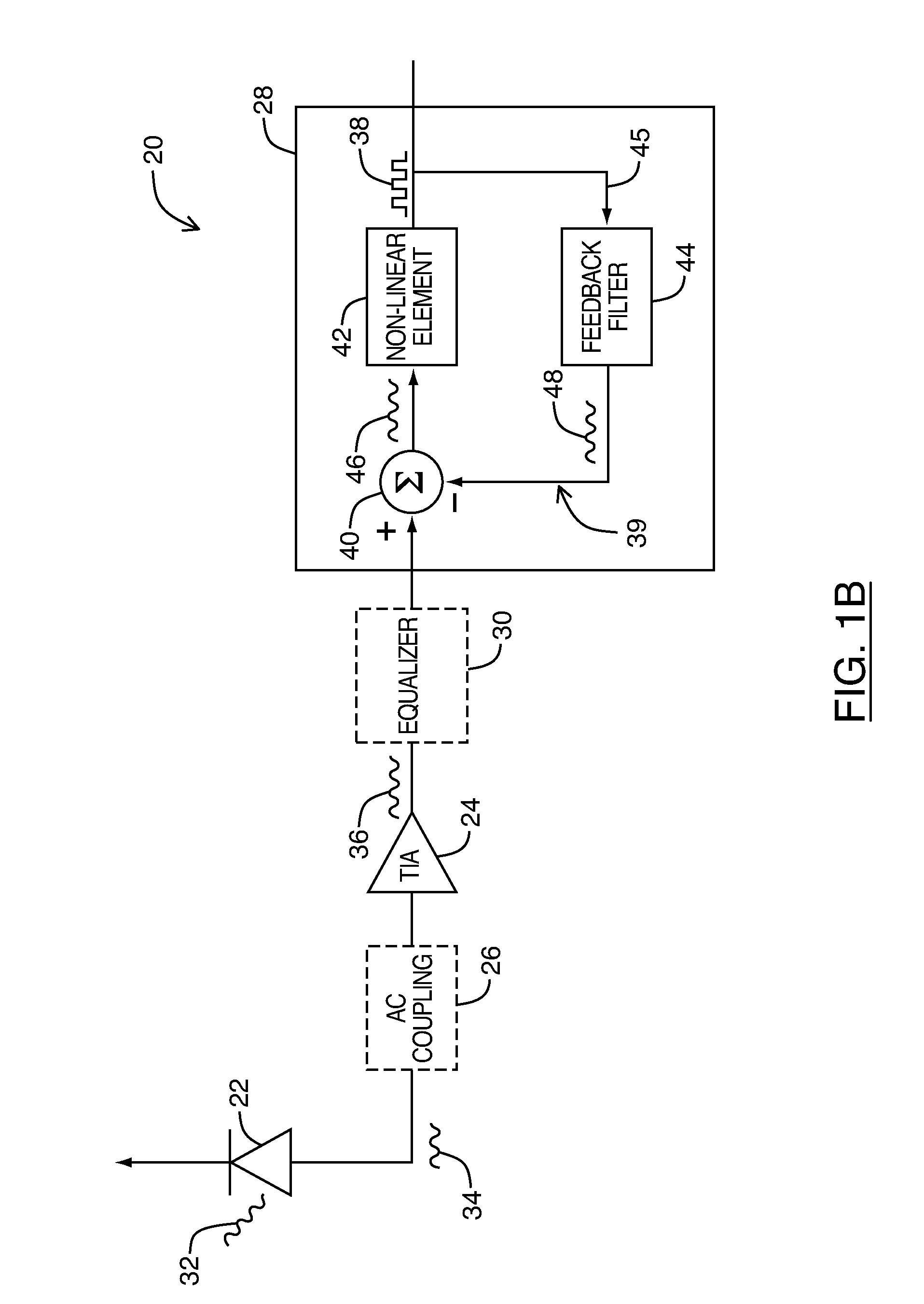Optical receiver with monolithically integrated photodetector
a monolithic integrated, optical receiver technology, applied in the field of optical receivers, can solve the problems of extra overhead and assembly cost of the photodetector, and achieve the effect of increasing bandwidth and phase margin
- Summary
- Abstract
- Description
- Claims
- Application Information
AI Technical Summary
Benefits of technology
Problems solved by technology
Method used
Image
Examples
Embodiment Construction
[0044]Although CMOS and other integrated photodetectors may conveniently minimize use of bond wires and reduce overhead, these types of photodetectors tend to generate significantly distorted detection signals due to their particular mechanisms of detection. Most light photons incident on the photodetector are absorbed either in the depletion region of the photodetector or deep into the underlying substrate depending on the penetration depth of the photon. Charge carriers generated within the depletion region are transported to the photodetector terminals relatively quickly through carrier drift in the presence of the reverse biased electric field applied to the pn junction. However, those charge carriers generated deep in the underlying substrate are transported initially through carrier diffusion until the charge carriers reach the depletion region, after which point carrier drift again becomes the dominant mode of charge carrier transport to the given photodetector terminal. Comp...
PUM
 Login to View More
Login to View More Abstract
Description
Claims
Application Information
 Login to View More
Login to View More - R&D
- Intellectual Property
- Life Sciences
- Materials
- Tech Scout
- Unparalleled Data Quality
- Higher Quality Content
- 60% Fewer Hallucinations
Browse by: Latest US Patents, China's latest patents, Technical Efficacy Thesaurus, Application Domain, Technology Topic, Popular Technical Reports.
© 2025 PatSnap. All rights reserved.Legal|Privacy policy|Modern Slavery Act Transparency Statement|Sitemap|About US| Contact US: help@patsnap.com



